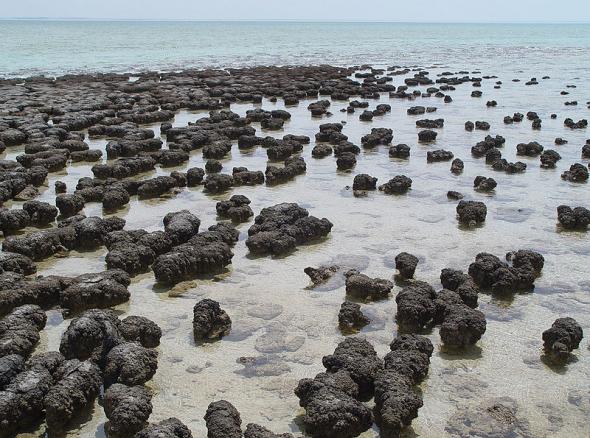Welcometomy page about Glacier National Park'!
On my page I will discuss some different features of Glacier National Park that really illustrate what the park used to look like billions of years ago. Features like fossilized mud cracks, halite (salt) casts, and stromatolites.
But what are stromatolites?!
Stromatolites are some of the first forms of life on earth. They can be found in the fossil record as far back as the Archean eon, they are most prolific during the pre-cambrian. They are organisms that form in shallow waters from the trapping and binding of sediments by biofilms of microorganisms. But what makes them special is not how they form, but how they obtain their life energy.
Stromatolites are cyanobacteria, a prokaryotic type of blue-green algae that uses photosynthesis for energy. During the pre-cambrian little oxygen existed on our planet, so when the stromatolites came around the atmosphere began to change. They are thought to be mostly responsible for increasing the amount of oxygen in Earth’s primeval atmosphere, which lead the way to the evolution of more complex eukaryotic organisms.
So basically, we have the stromatalites to thank for modern life on earth. Without them turning carbon into oxygen, life may have never evolved and you and I would have never been born.
photo courtesy: http://en.wikipedia.org/wiki/File:Stromatolites_in_Sharkbay.jpg
These are modern day stromatolites in Shark Bay, Australia. Remarkably, these stromatolites are still around today due to lack of grazing by snails.


